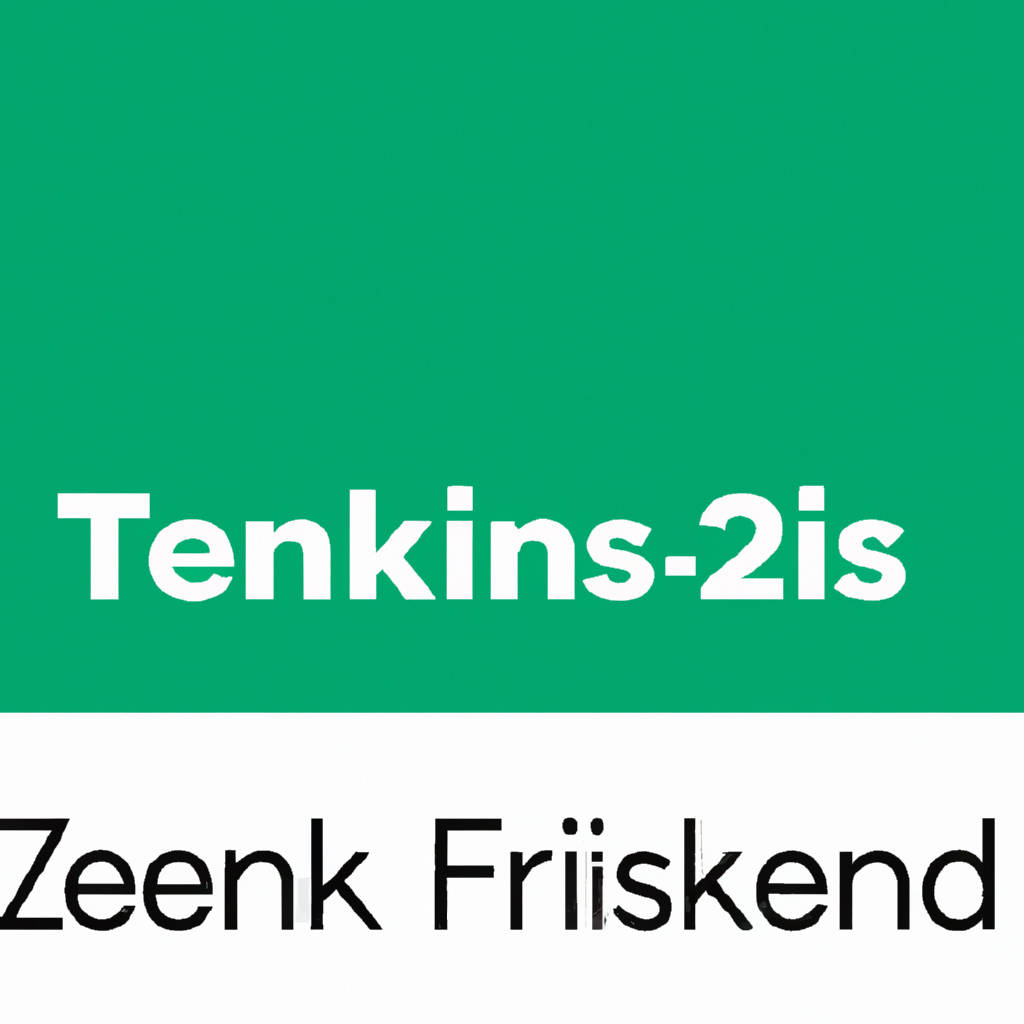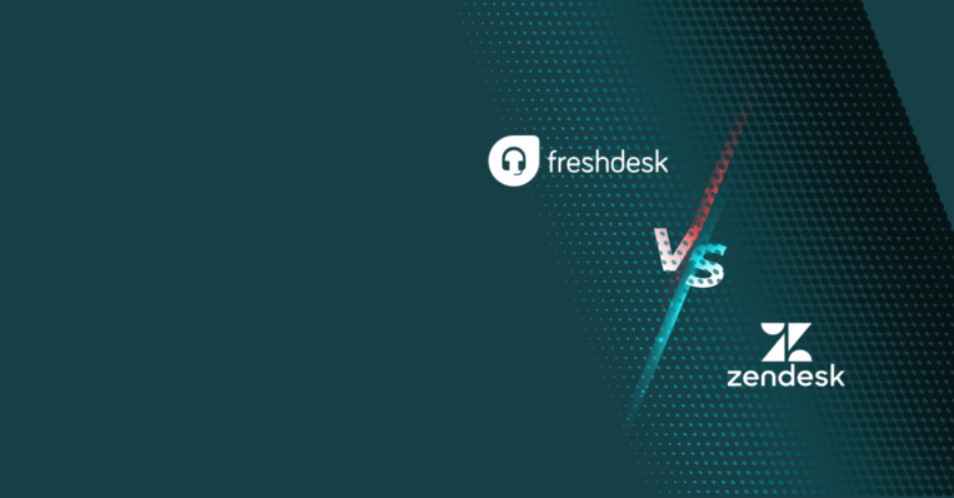In the realm of customer support software, Zendesk and Freshdesk continue to be significant players even in 2024. As companies strive to deliver superior customer service to enhance their brand reputation, choosing between these two platforms can be challenging. A comprehensive comparison between Zendesk and Freshdesk reveals nuanced differences that can impact businesses differently.
Starting with the user interface, Zendesk offers a sleek, intuitive, and modern design that is easy to navigate, whereas Freshdesk provides a more traditional and straightforward interface that might appeal to those not keen on flashy designs. While both have robust features that include ticket management, self-service options, multi-channel support, and reporting and analytics, they differ in their approach to these features. Zendesk emphasizes a more integrated approach, offering seamless interoperability between different features, making it more suitable for businesses looking for a more cohesive solution.
On the other hand, Freshdesk focuses on providing an all-rounded feature set that stands strong individually, making it a preferable option for businesses that require flexibility in configuring their customer service tool. In terms of customization, Zendesk allows deeper and more intricate personalization, enabling businesses to modify their customer support software according to their unique needs. In contrast, Freshdesk offers straightforward customization options that are easier to implement, favoring businesses that prefer simplicity and speed in setup.
Pricing is another critical aspect to consider. As of 2024, Zendesk has a more premium pricing structure, reflecting its comprehensive offering and the deep customization it offers. Freshdesk, however, has a more affordable pricing scheme, reflecting its straightforward and flexible approach to customer support.
In terms of customer support, both platforms have improved over the years. Zendesk offers 24/7 support through various channels and boasts a comprehensive knowledge base. Freshdesk too offers round-the-clock support and a vast library of resources, but it also provides a community forum where users can interact, share experiences, and solve problems collectively.
When considering integrations, both platforms offer a wide range of integration options with popular business software. However, Zendesk, with its marketplace of over 700 apps, offers more variety and depth in integration options. Freshdesk, while not as extensive in its integration options, covers all the essentials and is continuously expanding its integration capabilities.
Taking into account the advancements in AI and machine learning, both Zendesk and Freshdesk have incorporated these technologies into their platforms. Zendesk’s Answer Bot and Freshdesk’s Freddy AI have become more sophisticated over the years, enhancing their capabilities in automating responses, routing tickets, and providing predictive insights.
In conclusion, both Zendesk and Freshdesk have their strengths and cater to different business needs. The choice between the two would largely depend on the specific requirements of a business, its budget, and its preference for simplicity or deep customization. Therefore, companies must conduct a thorough evaluation before deciding on the platform that would best serve their customer support needs.

Choosing Between Zendesk and Freshdesk
When considering customer service software, two popular options are Zendesk and Freshdesk. Making a choice between these two platforms often involves examining a variety of factors. Both platforms offer numerous features like ticket management, self-service options, and multichannel support. However, they also have unique attributes that set them apart. Zendesk, for instance, provides a more streamlined user interface and advanced reporting tools that can be crucial for larger businesses.
On the other hand, Freshdesk offers a more robust free tier and competitive pricing for its premium features, making it an attractive choice for startups and small businesses. Additionally, Freshdesk’s gamified approach to customer service, where agents earn points for resolving tickets, can be a motivating factor for some teams. The ultimate decision often depends on the specific needs of your business. If your organization prioritizes advanced analytics and a sleek interface, Zendesk might be the better choice.
However, if your team is smaller or on a tighter budget, Freshdesk’s competitive pricing and gamification features might be more appealing. It’s essential to take the time to review each platform’s offerings and determine which aligns best with your business’s goals and needs. It’s also beneficial to take advantage of any free trials or demos offered by these platforms to get a sense of their functionality and usability. In the end, both Zendesk and Freshdesk are capable customer service software solutions, and the choice between them should be driven by your unique business requirements and resources.
Quick Comparison: Zendesk vs. Freshdesk
Zendesk and Freshdesk are leading helpdesk software solutions that businesses utilize to manage their customer support services. Both platforms offer a variety of features to streamline customer service workflows, but they differ in several ways. Zendesk is a cloud-based solution known for its advanced features, including social media integration, pre-defined ticket responses, and multi-channel support. It offers robust functionalities for ticketing, live chat, call center, and knowledge base. However, its pricing structure can be relatively high for small businesses, and it may require a steeper learning curve for users.
On the other hand, Freshdesk is a user-friendly platform with a straightforward interface. It offers features such as smart ticketing, multi-channel support, and a self-service portal. Its pricing is more affordable, making it a popular choice for small to midsize businesses. Additionally, Freshdesk’s gamification feature, which allows agents to earn points and badges for completing tasks, is unique and can enhance team motivation. It also integrates with a wide range of applications, which can improve business operations.
While both Zendesk and Freshdesk offer quality customer support solutions, the choice between them depends on your business needs, budget, and preferences. If you require advanced features and don’t mind a higher price point and learning curve, Zendesk could be the better option. However, if you prefer a more budget-friendly, user-friendly platform with unique features like gamification, Freshdesk might be the more suitable choice. Both platforms offer demo versions, so you can try each software to see which fits your business needs better. Keep in mind that both have their own strengths and are widely recognized for their ability to enhance customer service, making either a valuable addition to any business.

Analyzing Features and Capabilities: Zendesk vs. Freshdesk
Analyzing the features and capabilities of Zendesk and Freshdesk, both of which are top-tier customer service software platforms, reveals significant differences and similarities. Zendesk offers a comprehensive suite of tools designed to streamline customer support, including integrated customer relationship management (CRM), live chat, and a robust ticketing system. Additionally, it provides advanced analytical tools and functionalities such as A/B testing and customer segmentation based on various factors, which can be invaluable for businesses aiming for more targeted customer interactions.
On the other hand, Freshdesk too provides a rich array of features such as a multi-channel helpdesk, ticketing system, and a team inbox to manage and streamline customer conversations from multiple channels. Moreover, it offers automations for repetitive work, thus saving valuable time. Freshdesk’s game mechanics, which gamify the customer support process to increase agent productivity, is a unique feature that sets it apart.
In terms of capabilities, Zendesk stands out with its ability to scale according to business needs, from small startups to large enterprises. Its flexible API and vast marketplace of apps allow for better customization and integration with other business tools. Freshdesk also offers scalability and customization, but its standout feature is the intuitive interface which makes it user-friendly, even for those without advanced technical knowledge.
In conclusion, both Zendesk and Freshdesk are equipped with commendable features and capabilities. The choice between the two essentially boils down to specific business needs and preferences. The former might be more appealing to those seeking advanced analytics and testing capabilities, while the latter could be more suited for businesses looking for an intuitive, easy-to-use platform with unique features like gamification. Ultimately, both platforms aim to enhance customer support and help businesses foster better relationships with their customers.
User-Friendly Interface
A user-friendly interface is a vital aspect of any software application, website, or digital tool, as it significantly influences user experience. It refers to the ease with which a user can navigate through an application or website, carry out tasks, or achieve their objectives without needing expert knowledge or spending excessive time learning how to use the system. An effective user-friendly interface is intuitive, efficient, and straightforward, making technology accessible to a wide range of user competencies. A key feature of such interfaces is their simplicity, which eliminates unnecessary complexity and focuses on user comfort and satisfaction.
Moreover, a user-friendly interface should be aesthetically pleasing and engaging to keep the user interested and motivated. It should also be consistent in design and functionality, ensuring that similar actions are executed in similar ways across different parts of the system. This consistency makes the interface predictable and easy to understand, reducing the cognitive load on the user. The system should also provide clear and timely feedback to the user’s actions, helping them understand the consequences of their actions and how to correct any errors.
In addition, a user-friendly interface prioritizes accessibility, ensuring that all users, regardless of their abilities, can interact with the system effectively. This includes providing alternative ways of input and output, such as voice commands or text-to-speech features, as well as accommodating users with color blindness or other visual impairments. Ultimately, a user-friendly interface is a critical factor in the success of any digital product, as it directly impacts user satisfaction, productivity, and overall experience.

Real-Time Performance
Real-time performance refers to the ability of a system or a process to respond instantly to inputs and changes in the environment. It is a critical aspect in various fields such as computing, finance, manufacturing, and entertainment. In computing, for instance, real-time performance is crucial in maintaining system stability and accuracy. It ensures that processes are executed promptly and accurately, thereby preventing lags and system breakdowns. Similarly, in finance, real-time performance allows instant updates on fluctuating market trends, enabling investors to make timely and informed decisions. In manufacturing, real-time performance helps in monitoring and controlling production processes efficiently, thereby reducing waste and improving productivity. Additionally, in the entertainment industry, especially in gaming and live streaming, real-time performance is essential in delivering seamless and interactive user experiences. Notwithstanding its importance, achieving real-time performance is not a straightforward task. It requires robust and efficient systems, high-speed networks, and sophisticated algorithms among others. Despite these challenges, the quest for real-time performance continues to drive innovations and advancements in various fields, thereby transforming how we live, work, and interact with the world around us.
Customer Experience Expertise
Customer Experience Expertise is a vital component in any business model. It refers to the knowledge, skills, and abilities that are crucial in understanding, managing, and enhancing the interactions and relationships with customers. This expertise is often developed through comprehensive training, extensive experience, and a deep understanding of the customer’s journey.
A professional with customer experience expertise comprehends the importance of every touchpoint in the customer’s journey, from the first interaction to the final purchase or service completion. They strive to ensure a seamless, positive, and personalized experience for every customer, fostering loyalty and satisfaction. This expertise is not just about addressing customer queries and complaints; it’s about anticipating customers’ needs, understanding their preferences, and delivering value at every step of the way.
Leveraging technology, data analytics, and innovative strategies, customer experience experts can identify potential improvements in the customer journey, implement changes, and monitor their impact. They play a critical role in driving customer retention, enhancing brand reputation, and ultimately, boosting business growth. Therefore, investing in customer experience expertise can yield significant returns for businesses in the form of increased customer satisfaction, loyalty, and advocacy.

Scalability Options
Scalability options refer to the ability of a system, network, or process to handle a growing amount of work in a capable manner or its potential to be enlarged in order to accommodate that growth. Businesses today, particularly in the tech industry, cannot afford to overlook the importance of scalability options. Without a scalable model, a surge in demand can lead to poor performance, lost revenue, and a dip in customer satisfaction. There are two types of scalability: horizontal and vertical. Horizontal scalability, often referred to as scaling out, involves adding more machines into the existing pool. On the other hand, vertical scalability, also known as scaling up, involves adding more power such as CPU, RAM, or Storage to an existing machine.
The choice between horizontal and vertical scalability generally depends on the specific needs of the business and the architecture of the system. Meanwhile, cloud-based solutions have revolutionized scalability options, offering the ability to scale resources up and down quickly and easily, according to demand. This has significantly reduced the costs and complexities associated with scaling. However, scalability is not just about handling increased workload, it also encompasses maintainability, cost-effectiveness, and the system’s capacity to add new features or improvements. Therefore, when designing a business model or a system, it is crucial to consider scalability options from the outset, rather than trying to incorporate them later which can be challenging and sometimes impossible.
AI Integration for Customer Experience Enhancement
The integration of artificial intelligence (AI) in customer experience management has revolutionized how businesses interact with their clients. The use of AI has enabled companies to offer personalized solutions, in real time, improving overall customer satisfaction and loyalty. AI technologies, like chatbots and virtual assistants, have made it possible to provide 24/7 customer service, responding to inquiries and resolving issues promptly. These tools can also analyze customer behavior and preferences, allowing businesses to tailor their services and products to meet individual needs.
Furthermore, AI can enhance customer experience by streamlining the shopping process. With predictive analysis, businesses can anticipate customer needs, make appropriate recommendations, and ensure that products and services are always available. By minimizing the hassle of searching and deciding what to purchase, AI integration significantly improves the shopping experience.
AI also plays a vital role in data analysis. It can help businesses gather and analyze large volumes of customer data, uncovering patterns and trends that can inform strategic decision-making. This data-driven approach enables businesses to continually adapt and improve their offerings, ensuring they remain relevant and competitive.
In conclusion, AI integration can significantly enhance customer experience. It can allow businesses to provide personalized, efficient, and proactive service, leading to higher customer satisfaction and loyalty. Despite initial resistance to AI due to misconceptions about its implications, many businesses are now realizing its potential in transforming the customer experience. Therefore, businesses should explore ways to integrate AI in their operations to stay ahead in today’s competitive market.

Determining ROI: Freshdesk vs. Zendesk
Determining the return on investment (ROI) between Freshdesk and Zendesk is crucial for businesses looking to optimize their customer service operations. These platforms both offer a wide array of features designed to streamline workflows, improve customer satisfaction, and ultimately contribute to a company’s bottom line. However, the ROI derived from each platform can vary based on several factors, including the unique needs of a business, the total cost of ownership, and the overall impact on customer experience.
Freshdesk, for example, is known for its affordability and ease of use, making it an ideal choice for small businesses or those with simpler customer service needs. It requires less upfront investment and offers a straightforward, user-friendly interface. This can lead to quicker adoption rates, minimized training requirements, and reduced operational costs, all of which can contribute to a higher ROI.
On the other hand, Zendesk is often preferred by larger organizations or those with more complex customer service requirements. It boasts a comprehensive suite of tools and integrations, providing a more robust solution for managing customer interactions across multiple channels. While it may command a higher initial investment, its scalability and advanced features can lead to significant improvements in efficiency and customer satisfaction over time. These enhancements can generate an increased ROI in the long run, particularly for businesses with high volumes of customer interactions.
In conclusion, determining the ROI of Freshdesk versus Zendesk requires a careful consideration of not only the direct costs associated with each platform but also their respective capabilities in relation to a company’s specific needs. It is recommended that businesses define their customer service objectives clearly and evaluate each platform in the context of these goals to make the most informed decision. By doing this, they can ensure they are investing in a solution that will provide the maximum return on investment.
Customer Feedback: Zendesk vs. Freshdesk
Customer feedback is a crucial aspect of business growth and development. Zendesk and Freshdesk are two of the most prominent customer service software platforms that companies use to gather and manage feedback. Each platform has its strengths and areas for improvement, but both are designed to streamline customer service processes and improve overall customer experience.
Zendesk is a widely used platform known for its ease of use, intuitive interface, and a wide array of features including ticketing system, customer satisfaction surveys, and performance tracking. On the other hand, Freshdesk offers similar features but stands out with its robust multi-channel support, gamification features, and affordable pricing plans. It provides a comprehensive solution for managing customer feedback across different channels like email, phone, social media, and live chat.
Both platforms offer analytics and reporting tools that help businesses gain valuable insights from customer feedback. However, the choice between Zendesk and Freshdesk often comes down to a company’s specific needs, budget, and personal preference. For instance, a company with a small customer service team might prefer Freshdesk due to its affordable pricing, while a large enterprise with a need for extensive customization might lean towards Zendesk. Therefore, businesses should carefully evaluate the features, pricing, and scalability of each platform to make an informed decision that will best meet their customer service needs.

Insights from Thinkific
Thinkific, a leading platform for creating, marketing, and selling online courses, has garnered significant insights into the future of education and e-commerce. With the rapid shift towards digital learning, Thinkific’s data suggests a growing preference for flexible, learner-centric education. The platform has seen an increase in the number of instructors leveraging its features to create customizable, interactive courses. This highlights the evolving expectation of learners for personalized education experiences.
Thinkific’s insights also point to the importance of a comprehensive approach to e-course creation. Beyond simply uploading content, successful course creators incorporate quizzes, surveys, and discussion forums to encourage learner engagement. Furthermore, the platform has identified that acknowledging and rewarding learners’ progress is essential for enhancing motivation and course completion rates. This could involve providing certificates upon completion or incorporating a progress tracking tool.
From a marketing perspective, Thinkific’s data reveals the power of strategic pricing and promotional tactics. Course creators who offer tiered pricing or bundle their courses tend to see increased revenue. Additionally, offering a free or discounted initial course has proven to be an effective way to attract new learners.
Lastly, Thinkific’s insights demonstrate the potential of online courses as a source of passive income. With the ability to automate course delivery and manage learners at scale, instructors can generate a steady stream of revenue, even when they are not actively teaching. Overall, the insights from Thinkific reflect the dynamic nature of online education and the need for educators to adapt and innovate to meet the changing demands of learners.
Perspectives from Showpo
Showpo, an Australian online fashion retailer, offers an array of perspectives on contemporary trends, customer service, social media marketing, and business innovation. The company, founded by Jane Lu, epitomizes the modern retail landscape where digital platforms play a significant role in reaching out to a global audience. From a fashion perspective, Showpo consistently stays ahead of the curve, offering an eclectic mix of styles that cater to diverse tastes and preferences. The brand is known for its quick adaptation to fashion trends, ensuring customers always have access to the latest styles.
From a customer service standpoint, Showpo demonstrates the importance of creating a seamless shopping experience. Emphasizing user-friendly interfaces, prompt deliveries, and easy returns, they’ve established a strong rapport with consumers. In terms of social media marketing, Showpo has crafted a unique identity that resonates with its target audience. Their strategic use of Instagram, Facebook, and YouTube has not only enhanced brand visibility but also fostered a loyal customer base. Lastly, from an innovation viewpoint, Showpo exemplifies how to harness technology to boost business growth. Their use of data analytics and AI to understand customer behavior and tailor their offerings accordingly is noteworthy. In essence, the perspectives from Showpo illustrate a comprehensive roadmap for success in the digital retail industry.

Experiences of HeliosX
HeliosX is a comprehensive health tech group that incorporates Dermatica and MedExpress, both of which are designed to bring about a revolution in the healthcare sector. This innovative platform evokes a range of experiences that are changing the way we perceive and access healthcare services. With an agenda to promote digital healthcare, HeliosX has manifested a significant impact on the lives of its users, reshaping their experiences and interactions with the healthcare industry.
The primary experience of using HeliosX is convenience. The platform enables access to prescription medicines, consultation services, and skincare treatments from the comfort of one’s home. This is especially beneficial for individuals who are unable to visit pharmacies or doctors due to time constraints, geographical location, or health conditions. The online consultations provided by HeliosX also mean users can receive professional medical advice without lengthy waiting times typically associated with physical healthcare facilities.
Another significant experience is the personalized treatment plans. HeliosX understands that health and wellness are not ‘one-size-fits-all’. Therefore, they adopt a tailored approach, creating individualized treatment plans based on the specific needs and medical history of the user.
The platform also offers a seamless and straightforward user experience. The easy-to-navigate interface, prompt customer service, and swift delivery services contribute to a hassle-free, efficient, and user-friendly experience.
In summary, the experiences of HeliosX are a testament to its mission of making healthcare accessible, customized, and user-friendly. It is indeed a game-changer in the realm of digital healthcare, paving the way for a future where quality healthcare is within everyone’s reach, regardless of their circumstances.
Feedback from Wyze
Wyze, a reputable provider of cost-effective smart home devices, operates with a focus on customer engagement and values the feedback from its users greatly. The company believes that understanding its customers’ experience is integral to the growth and development of its product line. Therefore, they encourage their customers to share their experiences, concerns, suggestions, and even criticisms. This feedback process is crucial in enabling Wyze to continuously improve its products, services, and overall customer satisfaction.
Users have various platforms to voice their thoughts, such as through the company’s official website, social media accounts, or via email. Wyze’s customer service team is commendable in their swift response to queries and problems, seeking to resolve issues promptly. They also take into consideration the feedback received when designing and launching new products. For instance, a suggestion from a user could lead to the addition of a new feature in their next product update.
Moreover, the company also communicates transparently with their customers about any issues or updates. This not only builds trust but also allows them to gather constructive feedback that helps shape their future strategies.
The feedback from Wyze users has undeniably played a significant role in the company’s success. By listening to their customers and making necessary adjustments, they have managed to stay ahead in the competitive market of smart home technology. In essence, the feedback system at Wyze is a testament to their commitment to delivering outstanding customer service and high-quality products.

Addressing Common Inquiries
Addressing common inquiries is an essential aspect of customer service and public relations, particularly in businesses and organizations that interact with a diverse range of clients. It involves receiving and responding to frequent questions, concerns, or issues raised by clients, customers, or the general public. This process requires excellent communication skills, a deep understanding of the organization’s products, services, or operations, and a dedication to resolving customer queries efficiently. By effectively handling common inquiries, an organization can foster better relationships with its clients, improve its reputation, and even enhance its profits.
One of the first steps in addressing common inquiries is understanding what these questions or concerns are. This could be achieved through monitoring customer interactions, analyzing customer feedback, or conducting market research. Once these inquiries have been identified, an organization should ensure that its staff is adequately trained and equipped to address them. This could involve providing detailed information about the organization’s products or services, offering solutions to common problems, or simply explaining the organization’s policies or procedures.
In addition, an organization should strive to make the process of addressing common inquiries as easy and accessible as possible for its clients. This could include offering multiple channels for clients to reach out (such as email, phone, or social media), ensuring quick response times, and providing clear and concise responses.
Moreover, an organization should continually evaluate and improve its approach to addressing common inquiries. This could involve tracking key performance metrics, gathering customer feedback, or implementing new technologies or practices. By doing so, an organization can ensure that it is continually meeting its clients’ needs and expectations, and providing the best possible service.
Overall, addressing common inquiries is a critical aspect of any organization’s operations. By effectively addressing these inquiries, an organization can foster better relationships with its clients, improve its reputation, and ultimately enhance its bottom line.
Reasons Behind Companies Choosing Zendesk
Many organizations opt for Zendesk as their preferred customer service software due to a variety of compelling reasons. Primarily, Zendesk is renowned for its ability to enhance customer engagement. It provides an integrated platform that makes it easy for companies to manage customer interactions across multiple channels like email, chat, and social media.
This allows businesses to deliver a more consistent and personalized customer experience. Additionally, Zendesk features intuitive tools that help streamline customer support processes. Its efficient ticket management system, for instance, enables teams to track, prioritize, and solve customer support tickets effectively. Furthermore, Zendesk offers robust reporting and analytics capabilities that empower businesses to glean valuable insights into customer behavior and support performance. These insights can be instrumental in improving service delivery and driving customer satisfaction. Another appealing factor is the platform’s scalability.
As businesses grow and their needs evolve, Zendesk can be easily expanded and customized to meet these changing requirements. Its flexibility and adaptability make it a popular choice among businesses of all sizes. Lastly, the platform’s ease of use aids in quick adoption among team members, reducing the need for extensive training. All of these features combined make Zendesk a practical choice for businesses seeking to improve their customer service operations.
<p st
